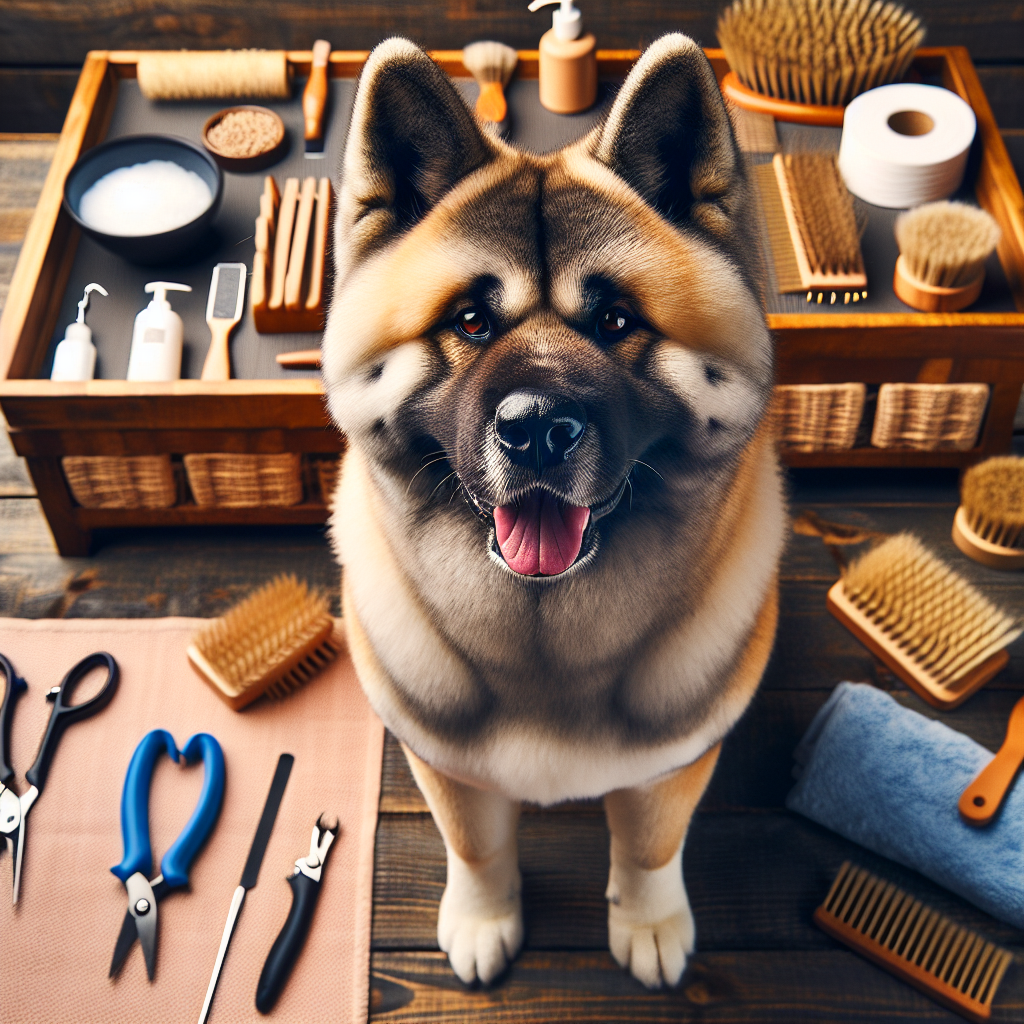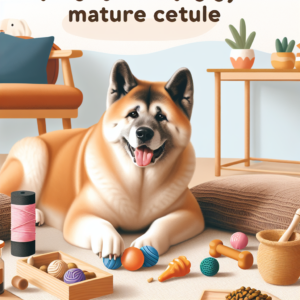Contents
Introduction
Grooming is an essential aspect of owning an Akita dog. Not only does it help maintain the breed’s striking appearance, but it also plays a crucial role in their overall health and well-being. Akitas are known for their thick, dense coats and strong personalities, and proper grooming is necessary to keep them comfortable and happy. In this article, we will delve into the specifics of grooming Akita dogs, including their coat types, brushing and bathing routines, as well as other aspects of their care, such as nail trimming and ear cleaning.
Coat Types and Maintenance
Akitas are a double-coated breed, meaning they have two layers of fur that require different types of care. Understanding the coat variations and specific grooming requirements will ensure your Akita’s coat remains healthy and clean.
Coat Types and Color Variations
Akita dogs have a double coat, consisting of a soft undercoat and a longer, coarser outer coat. The breed’s coat can vary in length, texture, and color:
- Long Coat: Some Akitas have a long, flowing outer coat, which is longer than that of the standard Akita. This coat requires more frequent grooming and special attention to prevent tangling and matting.
- Short Coat: Standard Akitas typically have a short to medium-length outer coat, which is dense and thick but requires less maintenance than the long coat. However, regular brushing is still essential to manage shedding.
- Color Variations: Akitas come in several color variations, including:
- White
- Brindle (a mix of black, brown, and tan)
- Red (from deep red to light cream)
- Black (with some white markings)
Grooming Tips Based on Coat Type
Regardless of whether your Akita has a long or short coat, regular grooming is essential for maintaining the health of their fur and skin. Below are grooming tips tailored to each coat type:
For Long-Coated Akitas:
- Brushing Frequency: Long-coated Akitas require more frequent brushing—ideally, 3-4 times a week. This will prevent the hair from becoming matted and tangled.
- Brushing Technique: Use a slicker brush to remove tangles and a comb to ensure that all layers are properly brushed. Start by brushing the outer coat, then move to the undercoat. Pay particular attention to the neck, behind the ears, and around the tail.
- Common Coat Issues: Long-haired Akitas are more prone to matting, especially around the armpits, neck, and tail area. Regular grooming and using a de-matting tool can help alleviate these problems.
For Short-Coated Akitas:
- Brushing Frequency: Short-haired Akitas require less frequent brushing, typically once a week, to remove dead hair and reduce shedding.
- Brushing Technique: A bristle brush or a rubber grooming mitt can be effective for short-coated Akitas. This type of brush helps to remove loose fur and smooth out the coat without causing irritation.
- Common Coat Issues: While shedding is less severe in short-coated Akitas, they can still experience some matting or hair loss. Regular brushing can prevent excessive hair buildup.
Identifying and Addressing Coat-Related Issues
Akita coats are generally healthy, but there are a few common issues that may arise:
- Excessive Shedding: Akitas shed heavily, particularly during shedding seasons in the spring and fall. Regular brushing will help remove the dead fur and reduce shedding around the home. During peak shedding periods, consider brushing your Akita daily.
- Matting: If not groomed regularly, both long and short coats can develop mats. To prevent this, use a de-matting comb or rake to gently break apart the mats without pulling on the fur.
- Dry or Flaky Skin: Ensure that your Akita’s grooming routine includes the use of moisturizing products if they have dry skin. Look for dog shampoos that help hydrate the skin and provide relief from flakiness.
Brushing and Bathing
Proper brushing and bathing are fundamental to Akita grooming. Here are some guidelines for keeping your Akita’s coat clean, healthy, and shiny.
Brushing Your Akita
Brushing is essential to prevent tangling, matting, and shedding, and it also helps distribute natural oils throughout the coat. Here’s a step-by-step guide for brushing your Akita:
- Choose the Right Brush: Select a brush appropriate for your Akita’s coat type. A slicker brush works best for long-coated Akitas, while a bristle brush or rubber mitt is sufficient for short-coated ones.
- Start from the Back: Begin brushing from the back and work your way down the sides, using long, gentle strokes. Always brush in the direction of hair growth to avoid pulling on the coat.
- Work on Tangled Areas: Pay special attention to areas that tend to mat, such as behind the ears, under the armpits, and around the tail. Use a comb to gently work through tangles without causing discomfort to your dog.
- Be Consistent: Brush your Akita regularly, ideally at least once a week for short coats and 3-4 times a week for long coats.
Bathing Your Akita
Bathing your Akita should be done on an as-needed basis. Overbathing can strip the coat of its natural oils and cause skin irritation. Here’s how to bath your Akita effectively:
- Choose the Right Shampoo: Use a high-quality, dog-friendly shampoo designed for Akitas. Choose one that addresses your dog’s specific skin needs, whether it’s dry skin, sensitive skin, or shedding control.
- Prepare the Bathing Area: If your Akita is used to baths, you can bathe them in the tub or an outdoor area with a hose. Be sure the water temperature is lukewarm to avoid any discomfort.
- Wet the Coat Thoroughly: Gently wet your dog’s coat with water, being careful around the ears and eyes.
- Apply Shampoo: Lather the shampoo into your dog’s coat, starting from the neck and working down the back. Massage it gently into the fur and skin. Be sure to rinse thoroughly to avoid any shampoo residue.
- Dry Your Akita: After bathing, dry your Akita with a towel. You may also use a hairdryer on a low setting if your Akita is comfortable with it. Be cautious not to overheat the dog or cause anxiety.
- Frequency of Bathing: Akitas don’t need frequent baths—every 4-6 weeks is generally sufficient unless they get particularly dirty or smelly.
Nail Trimming and Ear Cleaning
Nail Trimming
Nail trimming is essential for keeping your Akita comfortable and healthy. Long nails can lead to discomfort, difficulty walking, and even injury.
- Choose the Right Nail Trimmer: Use a sharp, high-quality nail trimmer designed for large dogs.
- Trim Slowly and Carefully: Gently press on your Akita’s paw to extend the nails and trim a small amount at a time. Be careful not to cut too far, as this can cause bleeding.
- Frequency: Trim your Akita’s nails every 4-6 weeks, or as needed.
Ear Cleaning
Ear cleaning is essential for Akitas, as their thick, erect ears can trap moisture and debris, leading to infections if not cleaned regularly.
- Check for Dirt and Wax: Inspect your Akita’s ears for signs of dirt, wax buildup, or irritation.
- Use the Right Ear Cleaner: Use a dog-safe ear cleaner, applying it to a cotton ball or gauze. Avoid using cotton swabs as they can push debris further into the ear canal.
- Wipe the Ear: Gently wipe the outer ear canal and fold with the cotton ball or gauze. Do not insert anything deep into the ear canal.
- Frequency: Clean your Akita’s ears every 2-4 weeks, or more frequently if they’re prone to ear infections.
Conclusion
Proper grooming is crucial for keeping your Akita healthy, comfortable, and happy. Whether your Akita has a short or long coat, regular brushing, bathing, nail trimming, and ear cleaning are essential to maintaining their well-being. By following these grooming guidelines, you can ensure your Akita remains not only beautiful but also healthy and content. Always use high-quality grooming tools and products, and remember that grooming is an opportunity to bond with your dog, making it an enjoyable experience for both of you.


